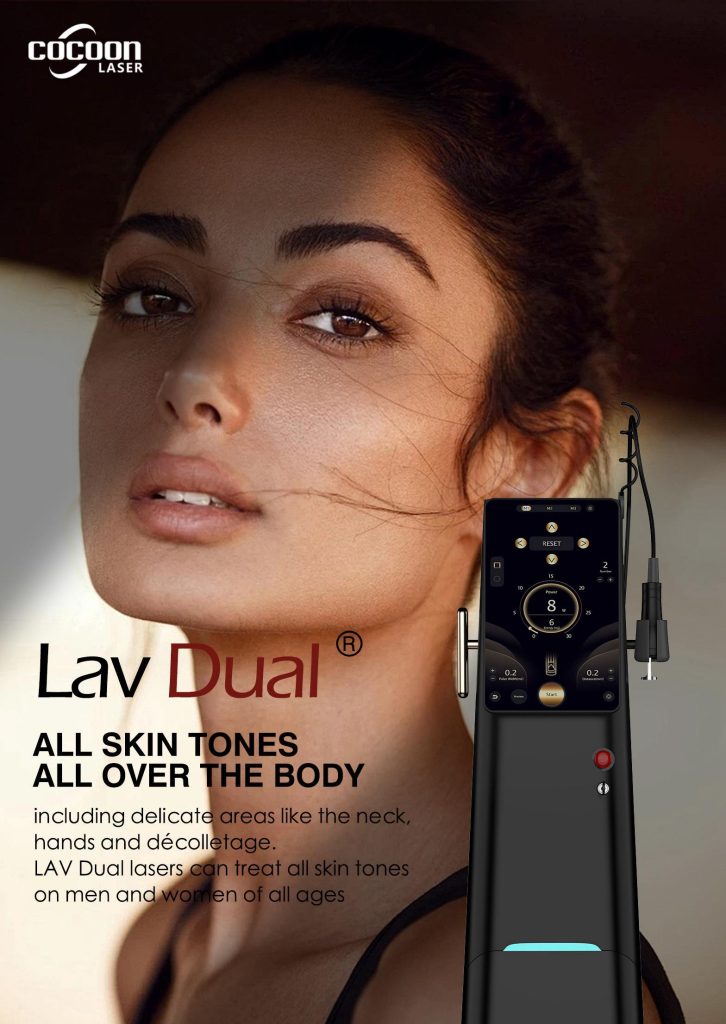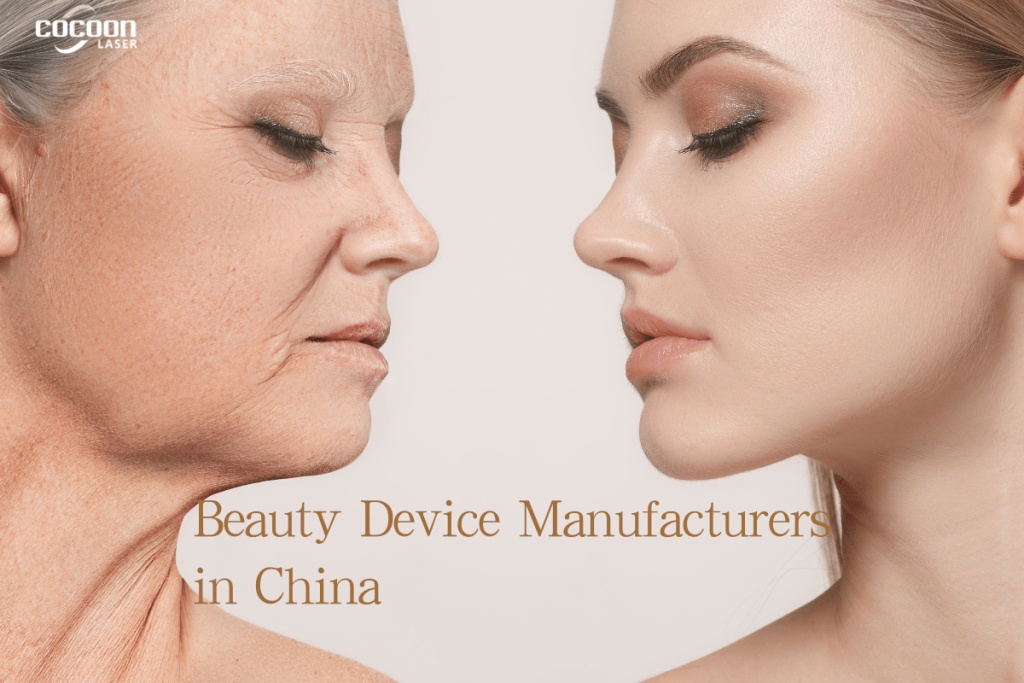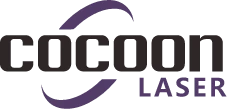1550 nm vs 1927 nm Fractional Lasers: Which Is Better for Resurfacing?
We Are Cocoonlaser – A Medical Aesthetic Device Manufacturer in China
Fractional lasers have become the workhorse of non-ablative skin resurfacing. Instead of removing the entire epidermis, they create microscopic treatment zones (MTZs) that trigger controlled wound-healing and collagen remodeling while leaving surrounding skin intact.
Among all wavelengths, 1550 nm and 1927 nm are the most widely adopted pair, used in systems like Fraxel Dual and Cocoon’s Lav Dual 1927 nm + 1550 nm Thulium Laser.
If your clinic is evaluating which fractional lasers to invest in—or how to position them to patients—this comparison gives you a data-driven overview.
How Fractional Lasers Work
All fractional lasers deliver columns of thermal energy into the skin, spaced between islands of untreated tissue. This pattern:
- stimulates collagen synthesis in the dermis
- accelerates epidermal turnover
- shortens downtime compared with fully ablative lasers
Non-ablative fractional lasers at 1540–1550 nm and 1927 nm were developed specifically to balance efficacy with safety across a broad range of skin types.PubMed Central
The key difference between 1550 and 1927 nm fractional lasers is how deep their energy is absorbed.

1550 nm Fractional Laser – Deeper Dermal Resurfacing
Absorption & depth
1550 nm (erbium-glass) sits in a water-absorption “valley”, so its energy penetrates relatively deeply—into the mid to upper dermis—without fully ablating the epidermis.
Clinical indications
Studies and clinical practice show 1550 nm fractional lasers are particularly effective for:
- atrophic acne scars and surgical scars
- moderate wrinkles and skin laxity
- texture irregularity and enlarged pores
In a split-face trial on atrophic acne scars, 1550 nm fractional Er:Glass laser significantly reduced mean scar scores on the treated side (decrease of about 5.7 points vs 1.2 on control, p = 0.0001).
Other reviews highlight consistent improvement in wrinkles, texture and scars in skin of color when protocols are carefully optimized.
Advantages
- Strong dermal remodeling and collagen stimulation
- Better choice for deeper scars and wrinkles
- Results continue to improve for months after a treatment series
Limitations
- More intraprocedural discomfort than 1927 nm; cooling and topical anesthetic are usually needed
- Mild erythema and edema for 1–3 days are common
1927 nm Fractional Laser – Superficial Resurfacing & Pigment
Absorption & depth
1927 nm (thulium) is strongly absorbed by water, so it focuses energy in the upper epidermis and very superficial dermis. This makes 1927 nm fractional lasers ideal for controlled micro-ablative resurfacing of the skin surface.
Clinical indications
Because the target zone is superficial, 1927 nm fractional lasers excel at:
- solar lentigines, age spots and sun damage
- epidermal melasma and post-inflammatory hyperpigmentation
- fine lines and overall “sun-worn” texture
A retrospective study of 100 melasma patients treated with 1927 nm fractional thulium laser reported marked pigment improvement with good tolerability, supporting its role as a pigment-selective resurfacing tool. Another study on post-inflammatory hyperpigmentation also showed significant lightening with low complication rates in darker skin types.
Emerging data even suggest benefits for active acne when 1927 nm energy is used to affect superficial sebaceous structures.
Advantages
- Very effective for pigment and superficial photoaging
- Short recovery; typically 2–5 days of mild crusting and flaking.
- Lower discomfort compared with deeper-penetrating wavelengths
Limitations
- Limited effect on deep dermal scars or marked laxity
- Often requires maintenance sessions for chronic pigment disorders


1550 vs 1927: Side-by-Side for Resurfacing
Below is a practical comparison for clinics planning treatment menus with fractional lasers (values are typical ranges from published data and manufacturer guidance, not hard rules).
Penetration & Targets
- 1550 nm – deeper dermal penetration; ideal for collagen remodeling, acne scars, surgical scars, and etched wrinkles.
- 1927 nm – superficial; ideal for epidermal pigment, actinic damage, melasma (with careful protocol), and fine lines.
Downtime
- 1550 nm – ~1–3 days erythema and edema; bronzing and flaking may follow.
- 1927 nm – ~2–5 days of mild crusting/peppering as pigment lifts off; social downtime is still relatively short.
Typical Session Counts
- 1550 nm – often 3–6 sessions spaced 3–6 weeks apart for scars or deeper texture.
- 1927 nm – 1–3 sessions for sun spots and photoaging; more for chronic pigment.
Best-fit indications
- Choose 1550 nm when your main goals are:
- atrophic or boxcar acne scars
- deeper rhytides and skin tightening
- long-term dermal remodeling
- Choose 1927 nm when your main goals are:
- mixed photoaging with brown macules
- melasma or PIH in experienced hands
- fast “polish” of tone and fine surface lines

Why Many Clinics Prefer Dual-Wavelength Fractional Lasers
In reality, most resurfacing patients have both issues: deep textural change and superficial pigment. That’s why platforms combining 1550 nm and 1927 nm fractional lasers have become popular. Fraxel Dual is the best-known example in clinical practices; it uses 1550 nm for deeper collagen work and 1927 nm for pigment and superficial resurfacing.
Cocoon’s Lav Dual 1927nm + 1550nm Thulium Laser follows the same logic but in a dual-wave fiber thulium system optimised for medical aesthetic clinics:
- Dual non-ablative/ablative fractional modes with 1550 nm + 1927 nm
- Adjustable scan size from 1×1 mm to 8×8 mm and spot distance from 0.1–2 mm for flexible coverage.
- Multiple operating modes (fractional, non-invasive, sliding and private modes) that allow face, body and intimate indications with one platform.
This kind of dual-wavelength fractional laser lets clinicians:
- customize the ratio of deep vs superficial treatment in the same session
- stage protocols (e.g. 1927 nm passes first for pigment, then 1550 nm passes for scars)
- treat all skin tones by adjusting energy density, coverage and cooling according to guidelines
So… Which Fractional Laser Is “Better” for Resurfacing?
There is no single winner; the “better” wavelength depends on the main problem you want to solve:
- For deep scars, etched wrinkles, stretch marks and structural remodeling, 1550 nm fractional lasers provide stronger dermal effects and long-term textural change.
- For epidermal pigment, sun damage, melasma and fine lines, 1927 nm fractional lasers deliver faster visible improvement with manageable downtime.
- For most modern resurfacing programs, a dual-wavelength approach gives the most flexibility, allowing you to tailor fractional laser depth, density and downtime to each patient’s skin type and indication.
If your clinic wants to position itself as a specialist in Fractional Lasers, consider framing consultations around the “depth vs pigment” conversation. Explain that 1550 nm is the workhorse for collagen and scars, 1927 nm is the specialist for pigment and surface renewal, and dual-wavelength platforms like Lav Dual combine both in a single medical aesthetic device. For B2B buyers or distributors, this lets you cover a wide range of resurfacing indications with one investment while keeping downtime and safety in a predictable, evidence-based range.









